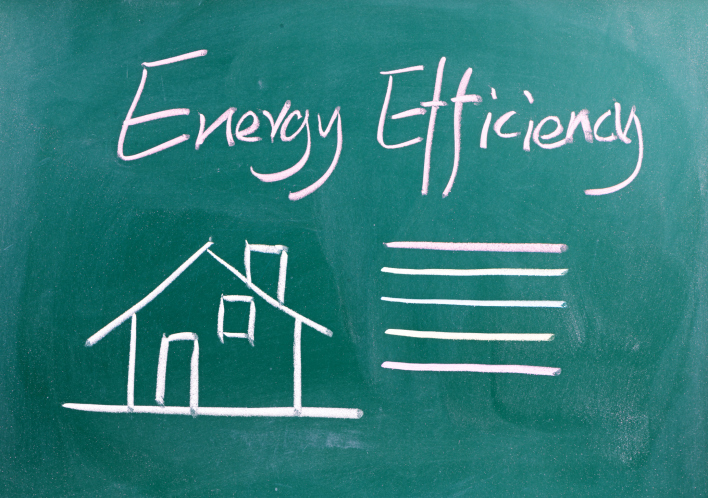 Last week’s economic calendar was full of new releases including pending home sales, Case-Shiller Home Price Indices and construction spending. Labor related reports including ADP payrolls, federal Non-farm payrolls, and the national unemployment rate were also released along with reports on consumer confidence and weekly reports on mortgage rates and new unemployment claims.
Last week’s economic calendar was full of new releases including pending home sales, Case-Shiller Home Price Indices and construction spending. Labor related reports including ADP payrolls, federal Non-farm payrolls, and the national unemployment rate were also released along with reports on consumer confidence and weekly reports on mortgage rates and new unemployment claims.
Case-Shiller: January Home Prices Up 5.7% Year-Over-Year
According to the S&P Case-Shiller 20-City Home Price Index for January, home prices increased by 5.70 percent year-over-year. The West led price increases with double-digit price gains posted for San Francisco, California, Portland, Oregon and Seattle, Washington. Denver, Colorado also posted a double-digit gain, but dropped its recent lead for metro areas tracked by the 20-City Index.
The National Association of Realtors (NAR) reported better than expected growth in February pending home sales. Low mortgage rates pushed pending home sales to their highest rate in seven months. Pending home sales rose 3.50 percent in February, which exceeded the expected reading of 1.80 percent and January’s reading of 03.00 percent. NAR Chief Economist Lawrence Yun said that February’s reading indicated that housing markets may be recovering after choppy winter sales. Mr. Yun also noted a “slight uptick in inventory,” which is good news for housing markets currently experiencing low inventories of homes for several months or more.
S&P Index Committee Chair David M Blitzer echoed Mr. Yun’s remarks about the impact of low inventories of homes for sale. While higher home prices driven by low inventories benefit home sellers, there comes a point where potential buyers cannot find and / or afford available homes. Constructing new homes is the only immediate solution to increasingly limited supplies of homes for sale.
Construction spending slipped in February from January’s upwardly revised $1.150 trillion on a seasonally-adjusted annual basis. February’s reading was $1.144 trillion. Construction spending fell 0.50 percent as compared to analysts’ expectations of 0.20 percent. Year-over-year, construction spending was 10.30 percent higher in February.
Mortgage Rates Mixed, New Jobless Claims Rise
Freddie Mac’s weekly mortgage rates survey reported mixed results last week. The average rate for a 30-yar fixed rate mortgage held steady at 3.71 percent; the average rate for 15-year fixed rate mortgages rose by two basis points to 2.98 percent and the rate for 5/1 adjustable rate rose by one basis point to 2.90 percent. Average discount points were unchanged across the board at 0.50, 0.40 percent and 0.50 percent respectively.
New unemployment claims rose to 276,000 against an expected reading of 270,000 new claims and 265,000 new claims the prior week.
The Bureau of Labor Statistics reported fewer jobs created in March than for February. 215,000 jobs were added in March as compared to the expected reading of 203,000 new jobs and February’s reading 245,000 new jobs. ADP reported a lower reading of 200,000 private sector jobs added as compared to expectations of 205,000 jobs added and February’s reading of 205,000 private sector jobs added. The national unemployment rate ticked up to 5.0 percent over February’s reading of 4.90 percent.
Consumer confidence rose over two percent in March with a reading of 96.20 percent. Analysts expected a reading of 94.20 based on February’s reading of 94.00.
What’s Ahead This Week
Economic reports scheduled this week include job openings and weekly reports on mortgage rates and new jobless claims.
 The concept of going green is often seen as an expensive process, and this can stop many people from taking the small steps needed to make their home more environmentally friendly. If you want to green-ify without any of the high costs, here are some simple things you can do that will easily improve the energy efficiency of your home.
The concept of going green is often seen as an expensive process, and this can stop many people from taking the small steps needed to make their home more environmentally friendly. If you want to green-ify without any of the high costs, here are some simple things you can do that will easily improve the energy efficiency of your home. If you’re considering whether home ownership is the right decision for you, there are lots of different factors you’ll want to take into account. Do you want to keep moving around, or are you ready to lay down roots in a community? Are you prepared for the additional upkeep that home ownership requires?
If you’re considering whether home ownership is the right decision for you, there are lots of different factors you’ll want to take into account. Do you want to keep moving around, or are you ready to lay down roots in a community? Are you prepared for the additional upkeep that home ownership requires? Home prices were 5.70 percent higher year-over-year in January according to S&P Case-Shiller’s 20-City Home Price Index. Top year-over-year gains were posted by Portland, Oregon at 11.80 percent, San Francisco, California at 10.80 percent and Seattle Washington posted a year-over-year gain of 10.70 percent. Denver, Colorado, which had top gains in recent months, posted year-over-year home price growth of 10.20 percent.
Home prices were 5.70 percent higher year-over-year in January according to S&P Case-Shiller’s 20-City Home Price Index. Top year-over-year gains were posted by Portland, Oregon at 11.80 percent, San Francisco, California at 10.80 percent and Seattle Washington posted a year-over-year gain of 10.70 percent. Denver, Colorado, which had top gains in recent months, posted year-over-year home price growth of 10.20 percent. Credit is of considerable concern when it comes to buying a home, but if you’re on the market for a new place in the next few months there may be some timely news that applies to you. If you haven’t heard about the changes to the Federal Housing Administration’s (FHA) credit score minimum, here’s some information on the recent reduction and how it may impact your home purchase.
Credit is of considerable concern when it comes to buying a home, but if you’re on the market for a new place in the next few months there may be some timely news that applies to you. If you haven’t heard about the changes to the Federal Housing Administration’s (FHA) credit score minimum, here’s some information on the recent reduction and how it may impact your home purchase. Increasing Home Prices Good For Sellers
Increasing Home Prices Good For Sellers For those who love to decorate and are always excited to test out the latest trends in design, the accent wall is a concept that’s become popular in recent years. If you’re not sure how to use this feature to twist any room on its side, here’s how to go about painting your very own and instantly dressing up the look of your favorite room.
For those who love to decorate and are always excited to test out the latest trends in design, the accent wall is a concept that’s become popular in recent years. If you’re not sure how to use this feature to twist any room on its side, here’s how to go about painting your very own and instantly dressing up the look of your favorite room.

